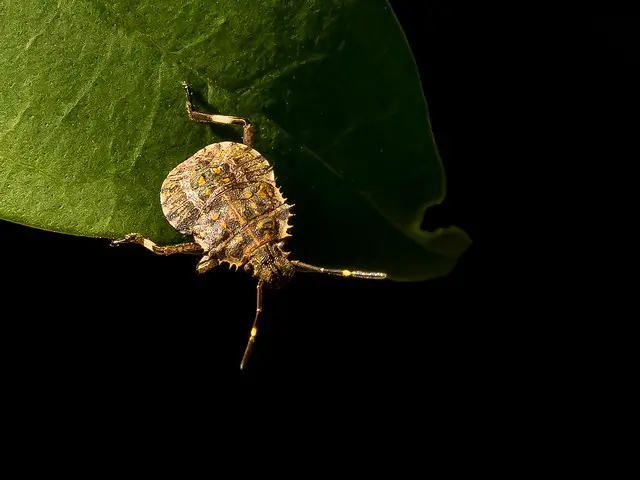It’s a very unfortunate and awful experience to find stink bugs in your garden. These tiny insects have the ability to ruin your crops and make them unfit to eat. The stink bugs are originally Asian natives, introduced to Pennsylvania in 1998. The pest lives in warm temperature and finds shelter indoors during winter. They grow rapidly, release the rotten smell and severely damage your fruits and vegetables. Here we will share details about stink bugs, their life cycle, how they damage your crops and methods to get rid of stink bugs.

What Are Stink Bugs?
Stink bugs belong to family Pentatomidae, which contain over 4700 species. The most common species of stink bugs are the brown marmorated stink bugs. They are 1/2 to 3/4 inches long with various shades of brown, black, red, orange and green. Stink bugs have a shield-like body with 2 antennae and six legs. Stink bugs got their infamous name by the rotted cilantro smell released from glands present in the thorax as a defensive measure.
The Life-cycle Of Stink Bugs
Adult stink bugs hibernate under bushes, near trees and indoors. They emerge in early spring and start to feed on host plants. The bugs attract their partner by releasing a luring pheromone or producing chirping sound by rubbing the legs. In a favorable environment, the bugs mate and females lay up to 150 eggs in clusters. They can be white, pink, yellow or brown in color and the color deepens as larvae develop. Stink bugs continue breeding through growing seasons and produce multiple generations which overlap each other. Larvae can be distinguished from adults by different sizes and color patterns. When food sources become scarce during the fall, the adults hibernate and repeat the cycle again.
Stink Bug Damage on Plants
Stink bugs are not privy to certain platns – they damage any plant which is available. They significantly damage trees, vines, shrubs and more than 50 different varieties of fruits/vegetables such as soybeans, peppers, tomatoes, blackberries, beans, corns and other crops. The bugs use their needle-like mouth part to suck plant sap of the plant; the damage can lead to spoilage and decay of the crop. The pest injects a digestive enzyme in the host plant which renders discoloration of the plant. Stink bugs on cabbage and other leafy crops leave gray and beige blotches. In corn deformed kernels and spotted stalk appears after an infestation.
Prevention and Control of Stink Bugs
Keep a close eye on your garden to avoid an outbreak of stink bugs. For prevention, you apply the following tips:
- Insecticidal spray “Bifenthrin” can be sprayed on building walls to prevent stink bugs as a more effective method for control. Bifenthrin is considered safe which does not leave behind an odor when applied. It also does not leave behind any visible residue.
- Clear all tall grasses, weeds, logs and leaf litter from your garden. This will help remove their shelters during winter. Encourage organic practices in your garden to resist a stink bugs attack such as folding soil regularly, promote beneficial microbes, use balanced fertilizers, proper irrigation practices and provide a suitable environment to attract birds.
- Minimize bright light sources as the light can attract stink bugs into your house; but you can use lamps to attract bugs and then get rid of them. Do not kill the bugs in your house, the smell released by bugs will alert other bugs to flee.
- Look for areas of moisture or leaks – stink bugs are typically drawn to wet, damp areas. Use wet towels to lure stink bugs and then manually remove them and kill them with soap water.
- Soap and Vinegar spray: Mix together 1 cup hot water, 1/2 cup white vinegar and 1/4 cup of liquid sap. Spray the mixture directly on stink bugs to get rid of them.
- Neem oil spray is also an efficient homemade remedy to control stink bugs. Mix together 1 teaspoon neem oil, 1/3 teaspoon liquid soap and 1-liter water. Shake the mixture and pour it in a spray bottle to apply it directly on plants.